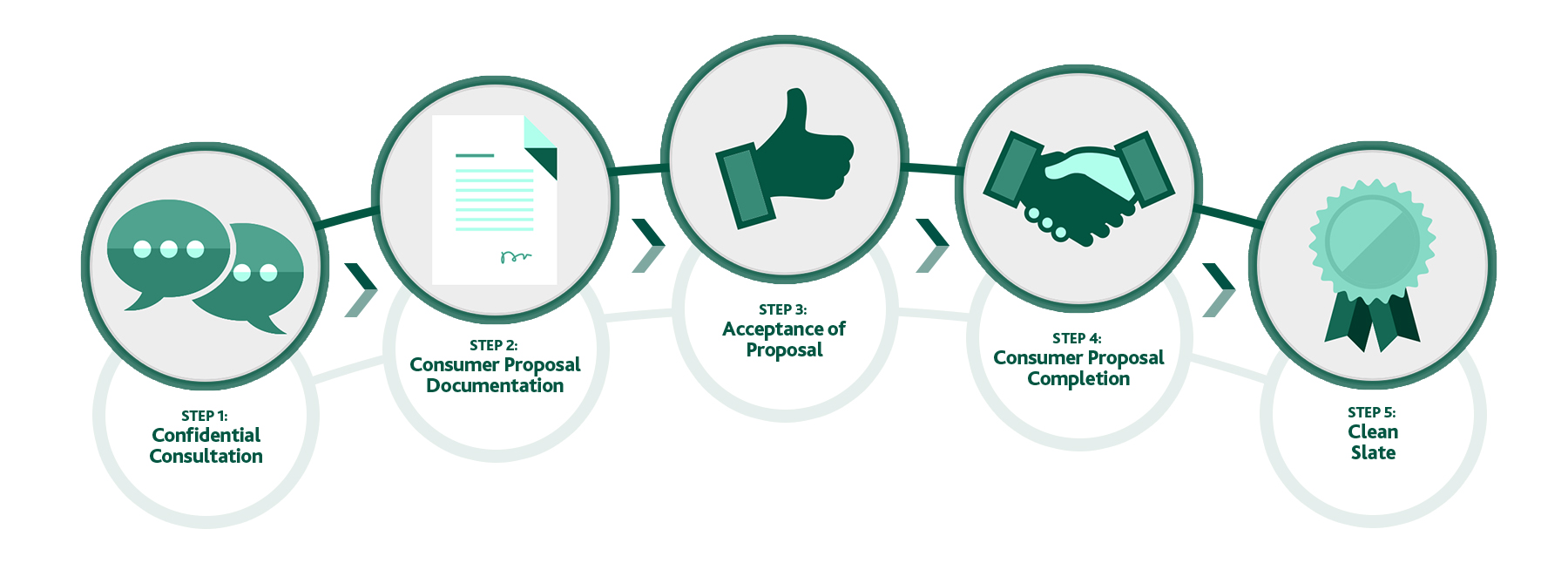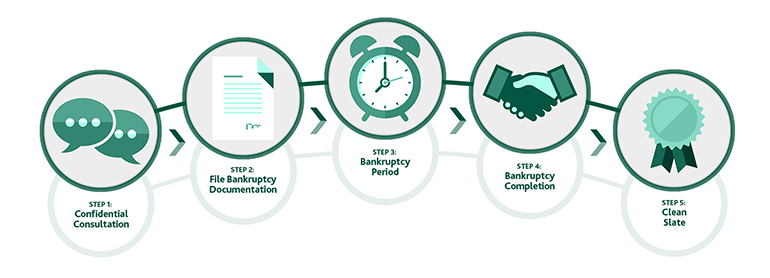Struggling To Decide Between A Consumer Proposal And Bankruptcy
A Consumer Proposal vs. Bankruptcy
Consumer Proposals and bankruptcies are both government legislated options which can provide you with relief from significant debt problems. In addition, both debt solutions can only be administered by a Licensed Insolvency Trustee and provide a legal stay of proceedings which require creditors to discontinue harassing collection calls, garnishment or other legal proceedings.

Determining which, if either, option is an appropriate solution in your own unique situation depends on a number of variables. Let’s explore the advantages and disadvantages of both a Consumer Proposal and a bankruptcy.
CONSUMER PROPOSAL – ADVANTAGES AND DISADVANTAGES
ADVANTAGES
- Immediately stops collection action, interest and garnishees.
- Simple, no monthly income and expense reports to fill out.
- You keep all your assets and tax refunds.
- Repay less than you owe.
- Offers higher recovery to creditors than a bankruptcy.
- Payment is fixed so you don’t have to make higher payments if your income increases.
- Pauses active collection on student loans.
- Creditors approve the proposal at the beginning of the process and there is no court hearing to determine if your debts are extinguished.
- Avoiding bankruptcy – you are driving the process and taking charge of your situation – payments are set by you and within your financial means.
- If you have been bankrupt before filing a proposal results in less impact on credit report than filing a second bankruptcy (second bankruptcy reported for 14 years on credit report).
- Sometimes, you can keep credit cards with nil balances.
- Budgeting and money management counselling is provided.
DISADVANTAGES
- If the majority of creditors vote against your proposal you may have to file bankruptcy.
- A typical Consumer Proposal is repaid over 4 to 5 years (longer than typical bankruptcy).
- Payment is fixed – in order to change the payment you have to amend the proposal and go through the voting process again.
- If you default (miss 3 payments), you're not able to file another proposal.
- Is reported on your credit report and negatively impacts your credit score for 3 years after completion.
- When you are rebuilding your credit after your proposal, some financial institutions will treat a proposal on your credit report the same way they do a bankruptcy.
- Must have less than $250,000 in debt (excluding mortgage on personal residence).

BANKRUPTCY– ADVANTAGES AND DISADVANTAGES
ADVANTAGES
- Immediately stops collection action, interest and garnishees.
- Creditors can’t refuse the bankruptcy.
- Trustee will often file any outstanding personal income tax returns.
- Process lasts between 9 and 21 months if you have never been bankrupt before, which is less than a typical Consumer Proposal.
- No limit on the size of debt load to be eligible to file.
- Budgeting and money management counselling is provided.
- You repay less than you owe.
DISADVANTAGES
- Assets vest with trustee who is tasked with liquidating some assets, subject to some exemptions.
- Monthly income and expenses reports must be submitted to trustee for review.
- Surplus Income payments will fluctuate according to actual monthly income.
- Creditors can oppose discharge and a court hearing may be required to get out of bankruptcy.
- Negatively impacts your credit score for 6+ years after completion.
- May affect ability to secure certain employment positions.
- Some tax refunds are turned over to the Trustee.
- Generally, GST credits are turned over to the Trustee.


